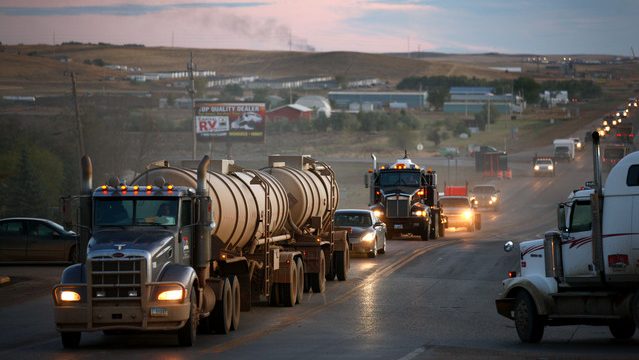The Keystone Pipeline Would Save Lives In North Dakota

Traffic is up in North Dakota, and more people/vehicles on the roads means more fatalities.
A big chunk of the traffic increase in the state stems from trucks transporting oil. There’s not enough pipeline or rail capacity to take all the oil produced out of the state. But if the Keystone XL pipeline were built, it would take hundreds of trucks off of the state’s roads.
And, as Department of Mineral Resources Director Lynn Helms points out, fewer trucks means fewer deaths on the state’s roads:
If the pipeline from Canada to Oklahoma existed today, North Dakota would have 300 to 500 fewer semi trips every day because oil would be transported by pipeline instead of by truck, Helms said.
The Department of Transportation estimates that three to six traffic fatalities each year are associated with that amount of trucking, as well as 80 to 150 traffic injuries, he said.
The Obama administration has twice blocked the Keystone XL, which needs federal approval because it crosses the Canadian border. Supporters urge Obama to approve the 1,700-mile pipeline, but opponents raise environmental concerns.
Helms testified about the Keystone XL Pipeline’s impacts to North Dakota last week to the U.S. House of Representatives Committee on Science, Space and Technology.
“There are some real hard numbers that we were able to provide on Keystone XL to show the impacts to North Dakota,” Helms said.
One of the most ironic aspects of the debate over the Keystone XL pipeline is that blocking the pipeline is actually less safe, both for the public and the environment. Pipelines are simply a safer way to transport oil. Pipelines leak a lot less often than trucks crash or trains derail.
But then, the objections from the environmentalists aren’t so much about safety as about just roadblocking oil production.







